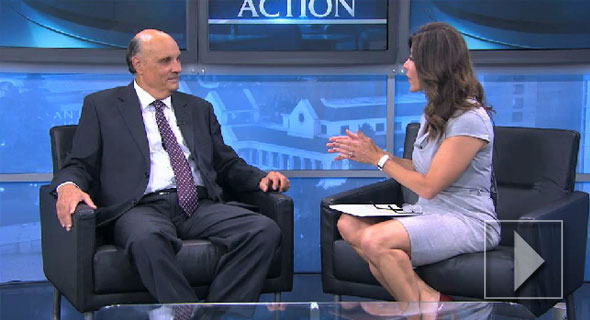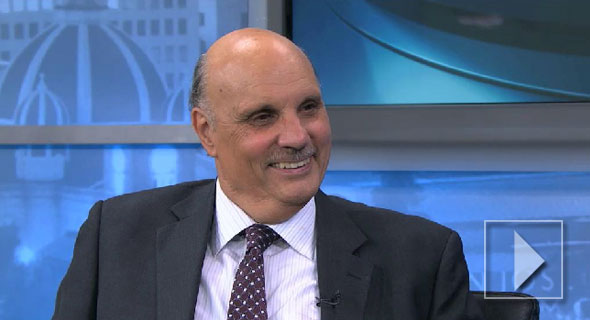Posts published in August, 2013
Elite Colleges Vary Greatly In Recruiting Low Income Students
With affirmative action under attack and economic mobility feared to be stagnating, top colleges profess a growing commitment to recruiting poor students. But a comparison of low-income enrollment shows wide disparities among the most competitive private colleges. The article is in The New York Times.
Policy Wonk Critiques College Orientation For His Child
By Dr. Watson Scott Swail, President & CEO, Educational Policy Institute
About a month ago, I was privileged to participate in the annual “college orientation” indoctrination process at a major public institution. My middle son is off to college in a few weeks, and, for our part, we were to visit the institution, he was to stay over the night, and I was to hang out at the campus for a day and a half.
[Editor’s Note: Please understand. This piece is not meant to serve as a diatribe about how awful or how great this orientation was. It was both. I simply want to offer some thoughts on how the process impacted me, given my background as a policy wonk and a parent. I also don’t want to come off as overly negative about the process. I could certainly write both sides. But I do want to point out some things that surprised, if not astonished, me during orientation, many of which are negative. So there is my front-loaded mea culpa.]
Those of us in the higher education world understand that the theory behind the orientation process is to acclimatize students and family members to the institution, leaving everyone with a little less vagueness, unfamiliarity, and, hopefully, less anxiousness about the transition process. After 18 years, your son or daughter will go away, far from your protection, and you are paying another institution to take care of them with the same kindness, appreciation, and wall of safety that you provided. And all the while you’re trying to convince yourself of that, you clearly understand that part of you will leave, either never to come back, or never come back the same. Those are the only two realities. It’s truly heartbreaking.
This was one of approximately 10 separate orientation “weekends” (they actually aren’t on a weekend, but that’s essentially what they are) held at this university for approximately 7,000 new students. At this session, there must have been over 700 students and over 1,400 people in attendance. The university had specially-printed programs for this particular orientation, although they handed out the wrong ones to the participants and had to exchange them later for the correct programs. This was important because the schedules for the two were completely different.
CLICK HERE TO CONTINUE READING
Incentive Money For Undergrads Seems to Increase Graduation Chances
States Offer Students an Incentive to Graduate: Money
Every year states hand out more than $11 billion in financial aid to college students with no certainty as to whether they’ll ever graduate. But early results from a handful of states’ pilot projects show that connecting financial aid with meeting certain benchmarks has increased the number of credits earned and the proportion of students who stay in school. (Hechinger Report, 07/30/13)
Why Students Change College Majors
Initial Beliefs about Majors Tempered by Experience
Students enroll in college quite optimistic about their ability to match their interests and skills with an appropriate major. This study uses an innovative student longitudinal survey to show that initial beliefs about majors were tempered by experience in courses and within specific programs of study. From a policy perspective, it is important to study which intervening factors affect choice of major, especially when misconceptions about program rigor or personal ability can steer students away from math and science fields. Understanding more about how students’ expectations change as they navigate through college could improve policies related to timing and selection of degree program. (New to the ECS Research Database)
New Reports Worth Reading On Developmental Education
From ECS:
Community College Pathways: 2011-2012 Descriptive Report (Carnegie Foundation for the Advancement of Teaching)
From Innovation to Transformation: Texas Moves to Reform Developmental Education (Jobs for the Future)
The Community College Research Center recently released the following reports:
Designing Meaningful Developmental Reform
Enhancing Rigor in Developmental Education
The Opposing Forces that Shape Developmental Education: Assessment, Placement, and Progression at CUNY Community Colleges
Strengthening Developmental Education Reforms: Evidence on Implementation Efforts from the Scaling Innovation Project
Basic Skills Education in Community Colleges: Inside and Outside of Classrooms
(W. Norton Grubb with Robert Gabriner)
Based on a study more than twenty community colleges, the book analyzes developmental education practices, exploring what goes wrong and what goes right, and provides a series of recommendations for improved practice. Read a previous GPG interview with Dr. Grubb.
Sweeping Change to Education Funding

State board of education president Michael Kirst explains California’s landmark new Local Control Funding Formula – the first overhaul in decades of the state’s system for funneling money to schools.

The president of the state board of education, Michael Kirst, says a new funding formula for schools matches money to high-needs students and returns decision making to local school boards after years of centralized control in Sacramento.
How To Make Financial Aid Work For Students
In a new study, Nicholas Hillman (Assistant Professor, University of Wisconsin-Madison) and Erica Lee Orians (Doctoral student, University of Utah) review the most recent and rigorous research on the role financial aid plays in improving college completion rates. With tuition rates consistently outpacing inflation and family incomes, along with the slow growth in educational attainment rates, the need for reforming state financial aid programs is becoming increasingly urgent to state policymakers. What can be done to reform state aid in ways that help increase college completion rates? This paper synthesizes the best evidence in the field, concluding reforms should:
- provide students with clear information about how to apply for aid;
- make the eligibility criteria simple and easy to understand;
- offer early commitments to students, far before they enter high school; and
- be well targeted to the state’s policy goals.
Click here for full article and study.
New Improved SAT Revealed
By David Coleman, CEO Of College Board
Let me begin by thanking you for all you have contributed already to the ongoing work we kicked off six months ago on revising the SAT®. We’ve been so impressed by the depth of your participation and insight.
I wanted to share with you the article The New York Times has written that in part highlights our goals and the early work we have done. As you will see, this is a terrific article on the SAT. In my mind, the most important sentence in the article is this: “College Board members need to be consulted on every element of the redesign.” We are delighted that this point was made clearly, and we are committed to that principle.
The listening tour in which we have been engaged in since the spring, and which will continue throughout the redesign process, has been invaluable in better understanding how the SAT can be a more valuable tool in the admission process and in preparing students for college in a meaningful way. We have engaged with admission and financial aid officers, faculty, counselors, and administrators. We have heard that the predictive value of the test is paramount, and that practice for the test should focus on work worth doing rather than on mastering test-taking strategies. I was particularly pleased that the article points to the College Board’s special commitment to help low-income students see broader college possibilities, which is another theme that has emerged strongly in our conversations about the SAT redesign. We look forward to additional member input as the redesign process continues.
With your contributions, we believe the next generation of the SAT will be a substantial victory for students, K-12 and higher education.
Sincerely,

David Coleman
President and CEO
The College Board
Inequality In Higher Education Gets Worse
A Georgetown University report concludes that African-American and Latino students — especially from low-income backgrounds — are underrepresented at the most selective four-year colleges and overrepresented at open-access two- and four-year institutions. The authors also found that the situation worsened from 1994 to 2009, leading them to suggest that higher education is reinforcing socio-economic and racial inequities. (Inside Higher Ed, 07/31/13)